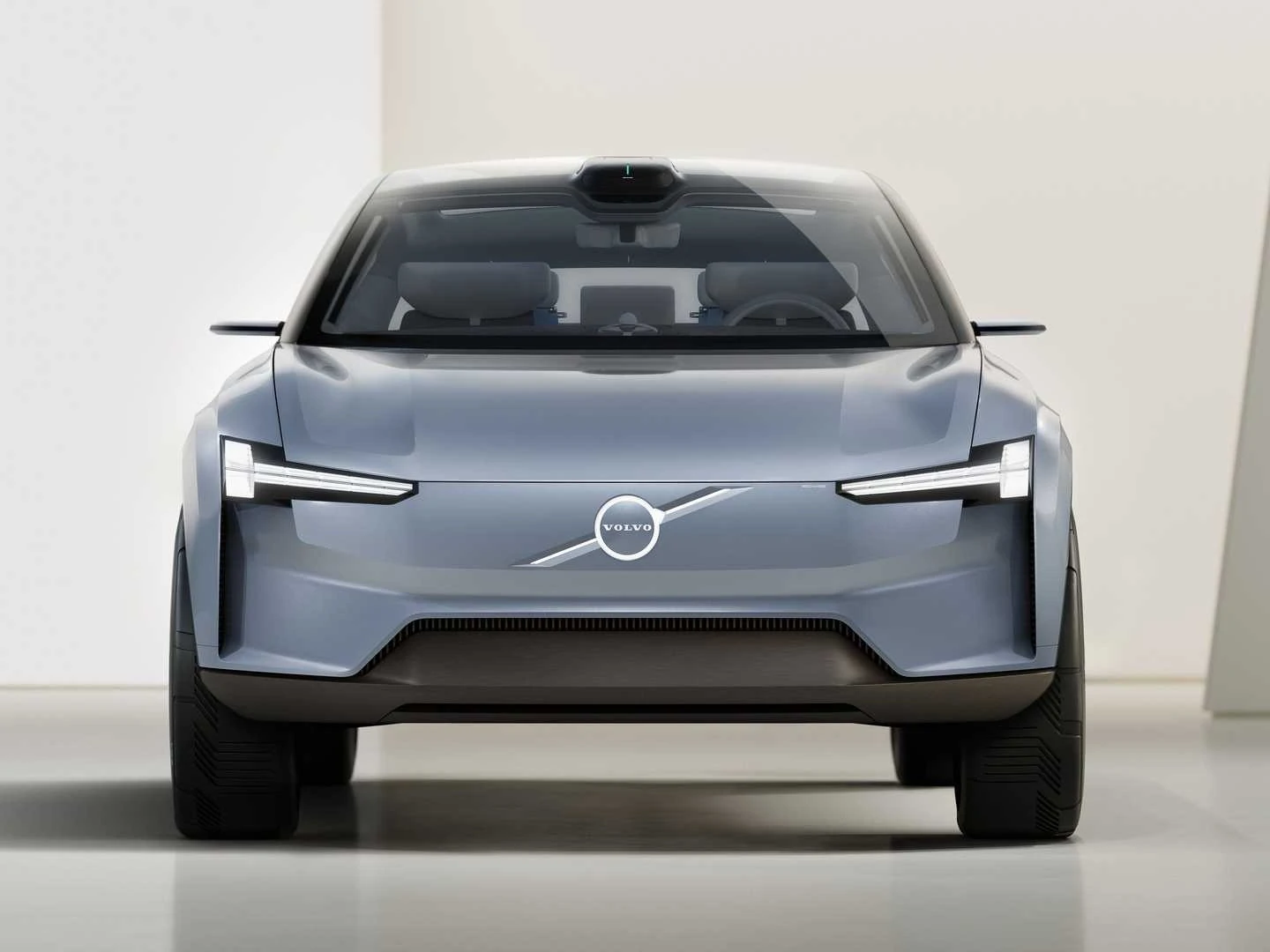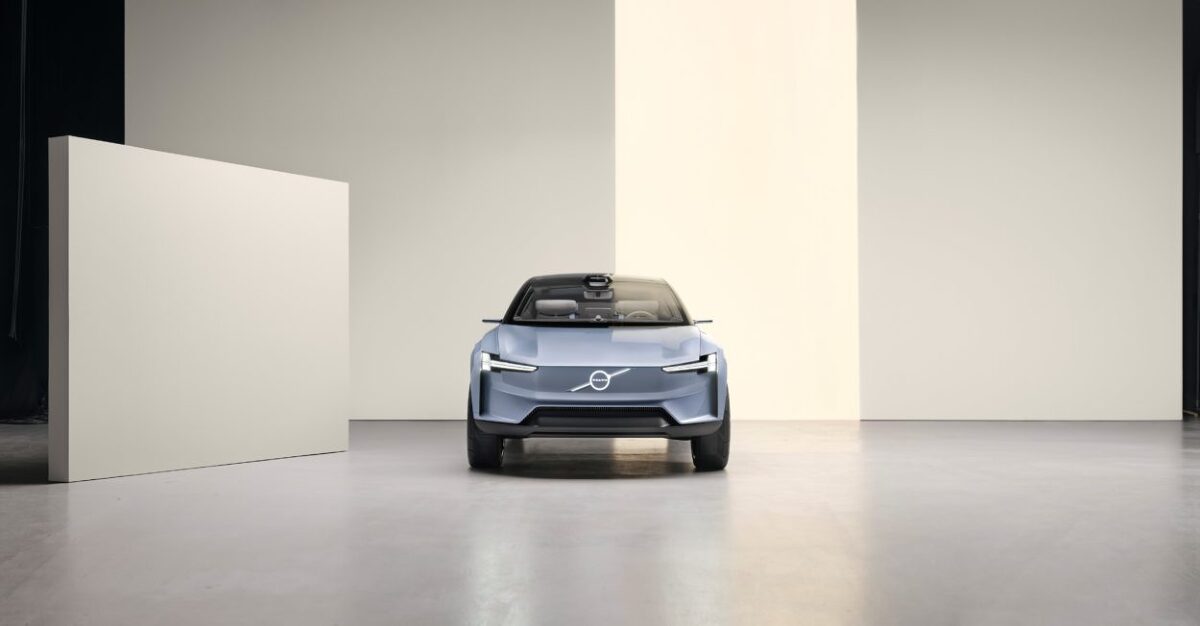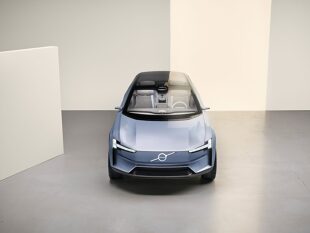
Reloading the Volvo concept. This is what future models of the brand might look like
 Concept cars most often demonstrate each brand's design direction. This time, this manifesto for the future also includes Volvo's environmental strategy.
Concept cars most often demonstrate each brand's design direction. This time, this manifesto for the future also includes Volvo's environmental strategy.
The Recharge concept is, of course, electric, because from 2030 Volvo Cars will produce only such cars. From 2040, the company wants to become completely climate neutral and operate in a closed cycle.
The interior of the Concept Recharge is made of environmentally friendly materials. Its tires are made from recycled and renewable materials. Vehicle aerodynamics and technical solutions contribute to the efficient use of energy. The reduction of CO2 emissions must be achieved not only at the production stage, but also throughout the vehicle's life cycle.
Clean energy is used for production and logistics processes. As a result, Volvo Cars estimates that its latest project has a chance of achieving a 80% reduction in CO2 emissions compared to the 60 Volvo XC2018. All this is done with the highest quality for which our brand is known.
This would mean CO2 emissions of just 10 tons of CO2 during the production and lifetime of the concept recharge. Such a parameter is possible when we use renewable energy to charge the car.
“As we enter the era of electric vehicles, the key question will be how far you can go on a full charge. Owen Reedy, head of brand strategy and design at Volvo Cars, said. It's easiest to use larger batteries, but these days it's not the same as just adding a larger fuel tank. Batteries add weight and increase your carbon footprint. Instead, we need to improve their performance in order to increase their reach. With Concept Recharge, we have tried to strike a balance between long range and energy efficiency with the same space, comfort and driving experience as today's SUVs.
The interior of the concept car is finished with natural and recycled materials. It features responsibly sourced Swedish wool, sustainable textiles and lightweight composites.
Organic Swedish wool is used to create natural breathable fabric without artificial additives. This warm and soft material is used in the seat back and top of the dashboard. A wool carpet also covers the bottom of the door and the floor.
 The seat cushions and touch surfaces on the doors are made from an environmentally friendly material containing Tencel cellulose fibres. This fabric is very durable and pleasant to the touch. By using Tencel fibers, which have been produced in a highly efficient water and energy saving process, Volvo designers can reduce the consumption of plastic in interior parts.
The seat cushions and touch surfaces on the doors are made from an environmentally friendly material containing Tencel cellulose fibres. This fabric is very durable and pleasant to the touch. By using Tencel fibers, which have been produced in a highly efficient water and energy saving process, Volvo designers can reduce the consumption of plastic in interior parts.
The seat backs and headrests, as well as part of the steering wheel, use a new material developed by Volvo Cars called Nordico. It is a soft material made from bio-materials and recycled ingredients that come from sustainable forests in Sweden and Finland, with 2% less CO74 emissions than leather.
See also: When can I order an additional license plate?
Elsewhere in the interior, including the lower storage compartments, rear headrest and footrest, the Concept Recharge uses a linen composite developed by Volvo Cars in collaboration with suppliers. It uses flaxseed fibers blended with composites to provide a strong and lightweight yet attractive and natural aesthetic.
Outside, the front and rear bumpers and side skirts are also linen composite. Thus, the use of linen composite both inside and outside significantly reduces plastic consumption.
 As the internal combustion engine gives way to a purely electric drivetrain, tires play an even more important role. Not only are they important for safety, but they also make a significant contribution to extending your vehicle's battery life. This means that tires for electric vehicles must always keep pace with technological developments.
As the internal combustion engine gives way to a purely electric drivetrain, tires play an even more important role. Not only are they important for safety, but they also make a significant contribution to extending your vehicle's battery life. This means that tires for electric vehicles must always keep pace with technological developments.
That's why Concept Recharge uses special Pirelli tires that are 94% mineral oil free and made from XNUMX% fossil fuel-free materials, including recycled and renewable materials such as natural rubber, bio-silica, rayon and bio-resin. This is reflected in Volvo Cars and Pirelli's joint cyclical approach to reduce resource consumption and environmental impact.
Buyers still love SUVs, but their typical shape isn't optimally aerodynamic, and the Concept Recharge has the same roomy interior as an SUV. The driver also sits slightly higher, as in SUVs. But the streamlined shape allows you to achieve a greater range on a single charge. The Concept Recharge's body features many aerodynamic details, as well as new wheel designs, a lower roofline and a specially modeled rear end.
See also: Jeep Wrangler hybrid version